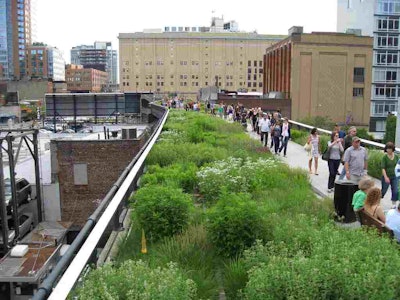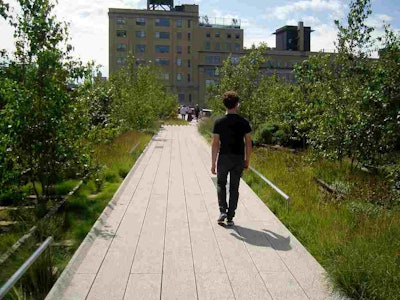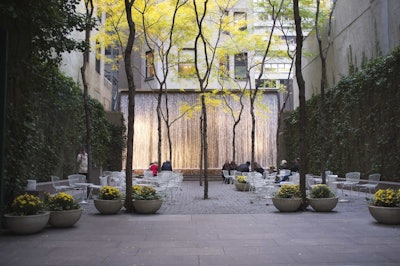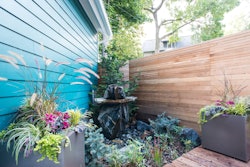 The High Line in New York City is an example of biophilic design. It is a repurposed train line that is now 1.45-mile long park full of grasses, shrubs and perennials.
The High Line in New York City is an example of biophilic design. It is a repurposed train line that is now 1.45-mile long park full of grasses, shrubs and perennials.Photo: Jessica Sheridan/Flickr
Biophilic design is often discussed and sought after, but what exactly does it mean and what does it entail?
While the human desire to be near nature has always existed, the term for this urge was created in 1984 by Edward O. Wilson. He defined biophilia as “the innately emotional affiliation of human beings to other living organisms.”
As more and more research about biophilic design has revealed the numerous health benefits of interacting with nature, 14 patterns have been developed for creating biophilic design in built environments.
These patterns fall into one of three categories: nature in the space, natural analogues, and nature of the space.
Even though biophilic design is generally thought of as an interior design practice, landscape architects have even more opportunity to incorporate biophilic principles into their work.
According to an article published in the journal Landscape Architecture Frontiers, this outdoor advantage is owing to three factors: “real (vs. representational) nature, perceptual fluency, and complex adaptive systems.”
 The plants that grow on the High Line were inspired by the landscape that appeared when the tracks became disused.
The plants that grow on the High Line were inspired by the landscape that appeared when the tracks became disused.Photo: Cristina Bejarano/Flickr
Obviously, landscape architects are not as limited as those working with indoor space. They have the luxury of always being able to choose real over fake nature. Because humans process natural and fabricated elements in different parts of the brain, more health benefits are achieved when one is around actual nature.
The ease of processing stimuli is known as perceptual fluency. When there are less demands for processing the environment, perceptual fluency increases. That’s why a person’s attentional resources can replenish in nature much faster than in a busy, urban environment.
The last factor – complex adaptive systems – simply acknowledges that unlike indoor features, which merely stand in as metaphors for natural elements, the outdoor environment provides natural systems landscape architects can draw from to craft designs that play a role in the complex relationships of a site.
As the world becomes increasingly more urban, landscape architects have the ability to create locations that reduce stress, mental fatigue and aggressiveness while boosting moods and imagination.
Some of the patterns that landscape architects can integrate into their designs are prospect and refuge, complexity and order, connection with natural systems, and presence of water.
Prospect has to do with the concept of the “borrowed view,” or an effort to provide an unobstructed view over a distance, creating a sense of openness, along with a feeling of safety and control.
Refuge is a similar principle as it allows the individual a view out of the space, but they are secluded with protection generally overhead and behind them. Using prospect and refuge reduces stress, boredom, fatigue and vulnerability while increasing comfort.
The pattern of complexity and order, meanwhile, strives to imitate the symmetries and fractals found in nature. By copying ecosystems, the progression through a space feels natural and encourages mental restoration. This pattern walks the line between boring and overwhelming.
Landscape architects have more occasions to practice connections with natural systems, because their spaces are actively affected by seasonal and temporal changes. Within a designed space in which seasonal variations were kept in mind, people can come to expect changes at certain times, heightening anticipation and nostalgia.
 Paley Park in New York City features biophilic design principles such as refuge, prospect, and presence of water.
Paley Park in New York City features biophilic design principles such as refuge, prospect, and presence of water.Photo: Aleksandr Zykov/Flickr
The love of water features isn’t a coincidence and water has long been used to create a relaxing element in a landscape or garden. Studies have shown that water enhances positive feelings, and responses are even greater when the water is flowing or individuals can touch or interact with the water.
To sum it up, biophilic design and helps to create more connections with nature. Ultimately, this will help to improve both the health and the wellbeing of the people using these spaces.











